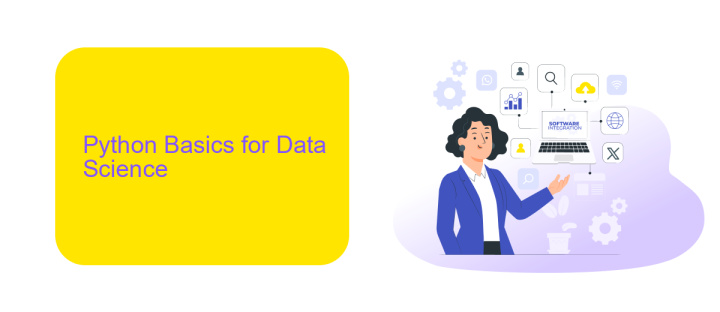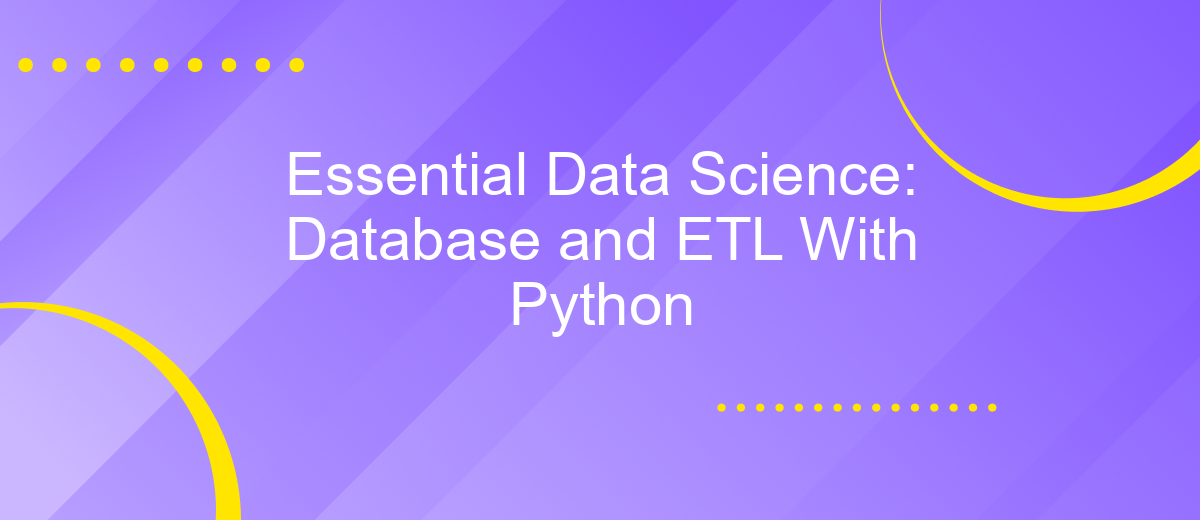Essential Data Science: Database and ETL With Python
In the rapidly evolving field of data science, mastering the essentials of database management and ETL (Extract, Transform, Load) processes is crucial. Python, with its powerful libraries and tools, offers an efficient and versatile solution for handling these tasks. This article delves into the fundamental concepts and techniques for leveraging Python in database operations and ETL workflows.
Introduction
Data science has become an indispensable tool in today's digital world, enabling organizations to extract valuable insights from vast amounts of data. Central to this process are databases and ETL (Extract, Transform, Load) operations, which facilitate the efficient handling and processing of data. Python, with its robust libraries and frameworks, has emerged as a powerful language for implementing these tasks.
- Databases: Storing and organizing data in a structured manner.
- ETL Processes: Extracting data from various sources, transforming it into a suitable format, and loading it into a database.
- Python Libraries: Utilizing tools like Pandas, SQLAlchemy, and Apache Airflow for seamless data handling.
One of the key challenges in data science is integrating various data sources and ensuring smooth data flow. Services like ApiX-Drive simplify this process by providing easy-to-use integration solutions. By leveraging such tools, data scientists can focus more on analysis and less on the complexities of data integration. This article will explore the essential aspects of databases and ETL processes using Python, offering practical insights and examples to help you get started.
Python Basics for Data Science

Python is a versatile language that is widely used in data science due to its simplicity and the vast array of libraries available. Key libraries such as NumPy, Pandas, and Matplotlib form the foundation for data manipulation, analysis, and visualization. NumPy provides support for large multi-dimensional arrays and matrices, along with a collection of mathematical functions to operate on these arrays. Pandas is essential for data manipulation and analysis, offering data structures like DataFrames that make it easy to work with structured data. Matplotlib, on the other hand, is used for creating static, animated, and interactive visualizations in Python.
In addition to these libraries, Python's integration capabilities make it a powerful tool for data science workflows. Services like ApiX-Drive can automate the process of data extraction, transformation, and loading (ETL), allowing data scientists to focus more on analysis rather than data preparation. ApiX-Drive simplifies the integration of various data sources and applications, streamlining the ETL process and ensuring that data is readily available for analysis. By leveraging these tools and services, Python becomes an indispensable asset in the data science toolkit.
Database Management with PostgreSQL

PostgreSQL is a powerful, open-source relational database management system that is highly suited for handling complex queries and large datasets. It is known for its reliability, robustness, and extensive support for SQL standards. When managing databases with PostgreSQL, it is essential to understand its core features and functionalities to leverage its full potential.
- Installation: Begin by installing PostgreSQL on your system. You can download it from the official PostgreSQL website and follow the installation instructions for your operating system.
- Configuration: After installation, configure the PostgreSQL server by editing the postgresql.conf and pg_hba.conf files to set your preferred parameters and authentication methods.
- Database Creation: Use the createdb command or the SQL CREATE DATABASE statement to create new databases.
- Data Import/Export: Utilize the COPY command or tools like pg_dump and pg_restore for efficient data import and export operations.
- Database Management: Regularly perform maintenance tasks such as vacuuming, indexing, and backups to ensure optimal performance and data integrity.
For seamless integration with other applications, consider using services like ApiX-Drive, which can automate data transfers between PostgreSQL and various other platforms. This can significantly reduce manual workload and enhance data synchronization across systems, making your database management more efficient and streamlined.
ETL Using Python Libraries

Extract, Transform, Load (ETL) is a critical process in data science, enabling efficient data integration from various sources. Python offers powerful libraries to facilitate ETL tasks, making data manipulation seamless and efficient. Among the most popular libraries are Pandas, SQLAlchemy, and Apache Airflow, each providing unique functionalities to streamline the ETL process.
Pandas is widely used for data manipulation and analysis, offering functions to read, transform, and write data effortlessly. SQLAlchemy allows seamless interaction with databases, making it easier to extract and load data. Apache Airflow, on the other hand, is a robust platform to programmatically author, schedule, and monitor workflows.
- Pandas: Ideal for data wrangling and transformation.
- SQLAlchemy: Facilitates database connections and queries.
- Apache Airflow: Manages complex ETL workflows.
For those looking to integrate various data sources without extensive coding, services like ApiX-Drive can be invaluable. ApiX-Drive simplifies the integration process, allowing users to connect multiple applications and automate data workflows efficiently. Leveraging these tools and services can significantly enhance your ETL processes, ensuring data consistency and reliability.
- Automate the work of an online store or landing
- Empower through integration
- Don't spend money on programmers and integrators
- Save time by automating routine tasks
Putting it All Together: End-to-End Data Science Project
Embarking on an end-to-end data science project involves several crucial steps, starting from data collection to final insights. Initially, data is gathered from various sources, which can include databases, APIs, or web scraping. Using Python, you can utilize libraries such as pandas for data manipulation and SQLAlchemy for database interactions. Once the data is collected, it often needs to be cleaned and transformed to ensure consistency and usability. This is where Extract, Transform, Load (ETL) processes come into play, automating these tasks and making data ready for analysis.
After preparing the data, the next step is to perform exploratory data analysis (EDA) to understand underlying patterns and relationships. Visualization libraries like Matplotlib and Seaborn can be particularly useful here. Following EDA, machine learning models can be developed and trained using frameworks like Scikit-Learn or TensorFlow. Finally, the results and insights are communicated through reports or dashboards. For seamless integration of various services and automation of workflows, tools like ApiX-Drive can be invaluable, allowing you to connect different applications and streamline the entire process.
FAQ
What is ETL in the context of data science?
Why is Python commonly used for ETL processes?
How can I automate ETL processes using Python?
What are some best practices for managing databases in data science projects?
How do I handle large datasets in Python during the ETL process?
Time is the most valuable resource in today's business realities. By eliminating the routine from work processes, you will get more opportunities to implement the most daring plans and ideas. Choose – you can continue to waste time, money and nerves on inefficient solutions, or you can use ApiX-Drive, automating work processes and achieving results with minimal investment of money, effort and human resources.


